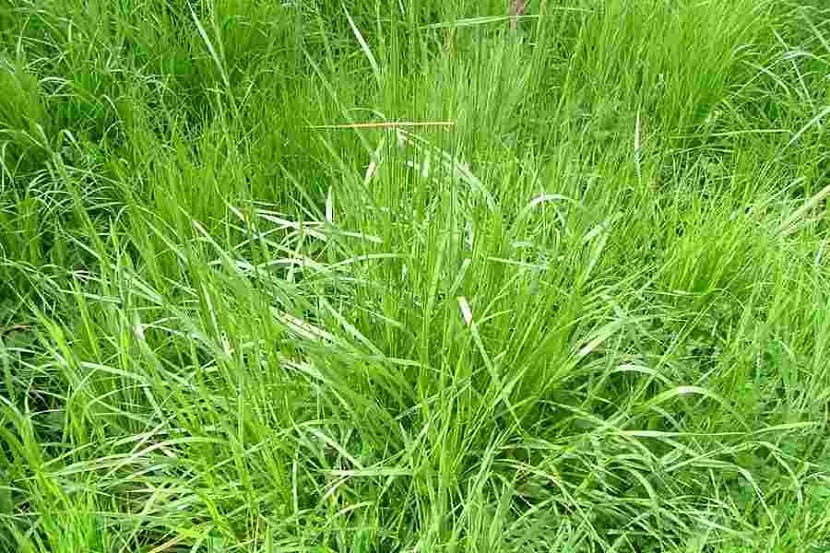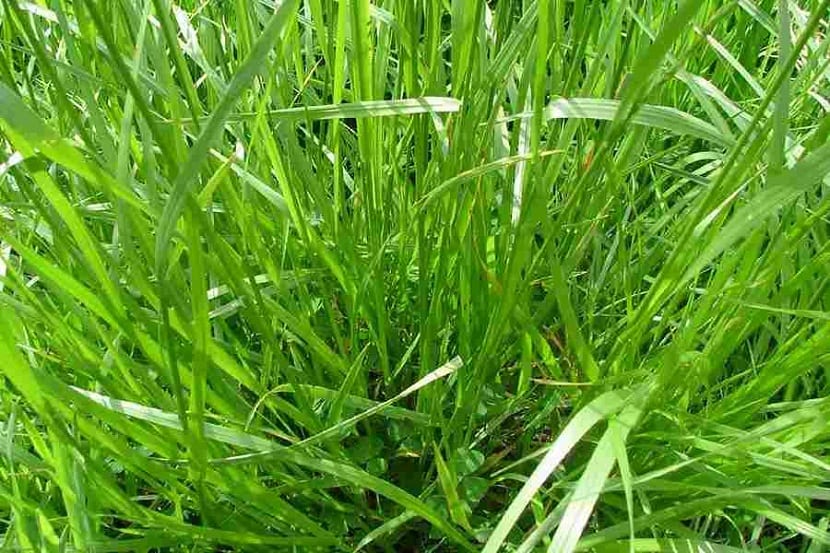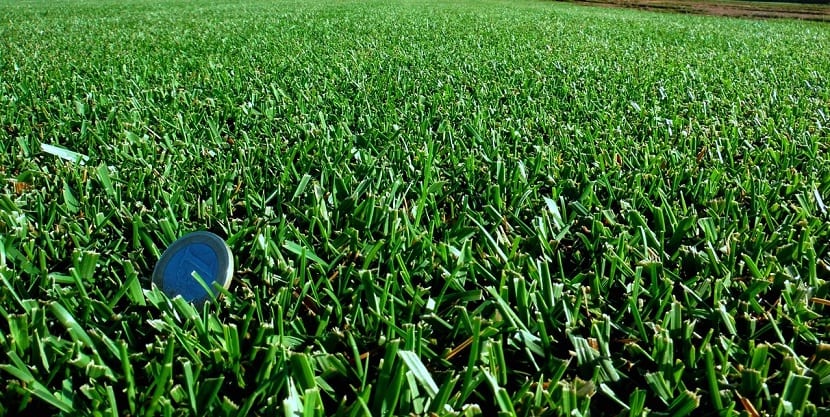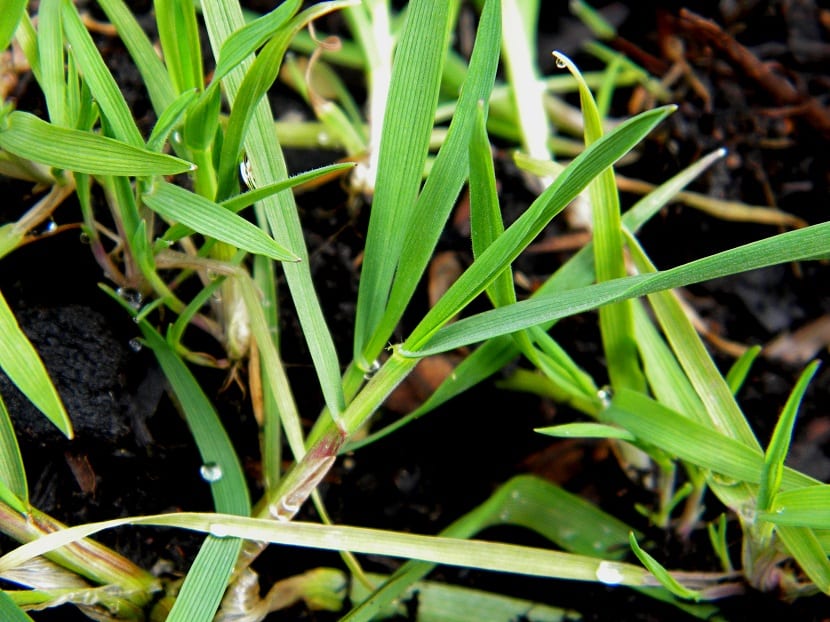
When choosing grass both for the garden and for numerous public spaces, a good option is the Fescue Arundinacea. It is a grass that can survive well in the cold season and has a great capacity to adapt to cold and transition periods. This makes it very suitable for all kinds of gardens in the Iberian Peninsula given our climate. Among their common names we find that of tall cañuela and tall fescue. Even if you have great adaptability, you have to focus on various care that you need.
Here we are going to teach you everything you need to know about Fescue Arundinacea in case you choose it as a lawn in your garden that you can take good care of it.
Key features

As we have mentioned before, it is a grass native to Europe and its main function before being used as grass was to feed livestock. The characteristics of resistance to the conditions that generate stress is high, So it began to be used as a lawn in public spaces, soccer fields, etc.
In the USA in 1931, it was when the crops that came from Kentucky began to have popularity. They began to call it Kentucky 31. It was the pioneer of the Fescue Arundinacea used as grass. Since this discovery, the species has been improved little by little to have an increasingly sophisticated result. Among the genetic improvements that have been made are the fineness of the leaf, more tendency to grow laterally and less vertically (this is perfect to avoid cuts, injuries and frequent maintenance tasks), a darker green color and greater resistance to diseases.
In the 80s, numerous varieties of Fescue Arundinacea and each was more widely used than the other. The bearing of this species is semi-erect and reproduces vegetatively by tillering. A fairly dense basal leaf clump forms. It has no flowers. It has a quite fibrous root system that is capable of going deeper into the substrate than other species of cespitose grass.
Detailed description

Some plants may have rhizomes. This is interesting when it comes to wanting to improve the colonization capacity to get stronger. The leaves are of the parallelinerial type. This means that they have their nerves positioned parallel and straight. In the upper part of the leaf the nerves are more noticeable than in the basal area. The edges are rougher and hyaline. It has a split pod and its stem is reddish or purple from the base.
It has a truncated ligule and membranous type of greenish color. The blade is up to approximately 6mm wide. Their atria are hairy and range in length from 0,2mm to 1,5mm. The insertion zone between the sheath and the leaf is quite wide compared to other species. It is also divided and has hairs on the edges. As mentioned before, it does not have flowers, but it does have inflorescences composed of an erect panicle. Its fruit is a dressed caryopsis. A single gram of this fruit is capable of containing up to 400 grains that are used for its reproduction. This gives it a great advantage of colonization of the land whenever the environmental conditions and substrate allow it.
The root system is of the fibrillar type and can reach a depth of 35 mm. It is the cespitose species of the temperate climate with the most powerful root system. Therefore, its use for various aspects is quite interesting. The entire root system is renewed annually during the spring season.
Cultivation of Fescue Arundinacea

When we have a lawn of Fescue Arundinacea, we must bear in mind that The harvest must be done in such a way that we leave between 5 and 8 cm of height between the leaves. The lowest are the cuts that are left only 3 cm high. However, this height can cause it to be colonized by other species such as Poa annua and other cultivated herbs. If we want a unified lawn, it is better to let the plant have that height to guarantee that it does not have any other colonizers.
Regarding fertilization, the tall cañuela can be managed at different levels. For example, if we are in clay soils, no more than one or two applications of nitrogen fertilizer are needed per year. They are usually applied with irrigation water. However, soils that are sandy type do require more annual applications. The varieties of Festuca Arundinácea that require less nitrogen are the English Ray grass or the Poa Pratense.
It has great tolerance to both cold and heat, which makes it perfect for growing in our Iberian climate. Within all the types of grass out there, the Fescue Arundinacea It is the one that produces more and deeper roots in the winter season. In soils whose roots can go deeper they will have up to 60 cm. In addition, it is a very useful type of grass since it adapts well to low irrigation and drought conditions. To water it, it does not have to be a deep watering, it is enough for it to be superficial and more frequent watering.
Watering the lawn once or twice a week is more than enough. It does not need to be watered daily. It is, without a doubt, the tussock grass that has the most resistance to heat.
Tolerances

It is likely to be the species that produces the least amount of thatch of all cool season lawns. The varieties that it has are of lateral growth and high density. They are more likely to have an accumulated layer of dry matter, but accumulations of other crops are not observed. This helps a lot to the colonization of the substrate by this same species.
It is very cold tolerant if we compare it with other grasses. It is possible that some hard frosts can lower the coloration of the lawn, but they will not die. It also has quite a tolerance for being in the shade for a long time. If the weather is humid, even more can endure in the shade. In areas with less humidity it is more prone to be attacked by diseases such as fusarium.
I hope that with these tips you can take care of the Fescue Arundinacea in your garden and enjoy the quality of the grass.